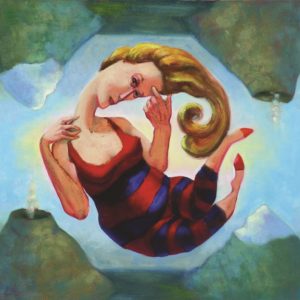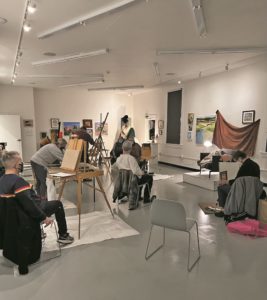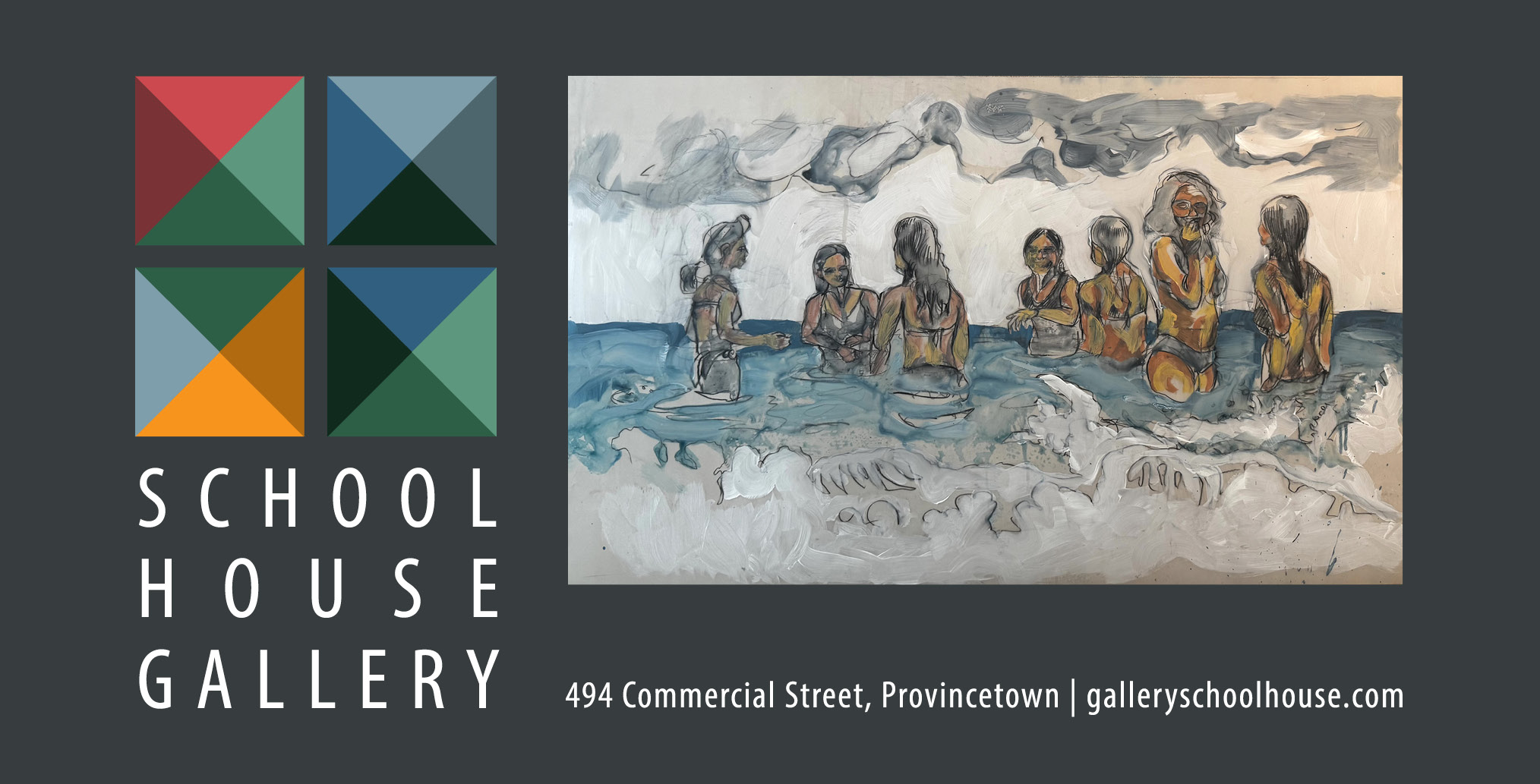
Pluhar’s Paintings at Preservation Hall
“Andrea Pluhar: A Survey of Painting” opens at Wellfleet Preservation Hall, 335 Main St., on Friday, Jan. 28 and runs through March 1.
Pluhar, who’s lived in Wellfleet for over 30 years, is a creative polymath. A founder of Wellfleet Porchfest, she hosts a monthly contra dance, plays the fiddle, and runs a graphic design service. She’s also an artist, here presenting an informal survey of 25 years of work.
Her paintings, residing in magic realism, are influenced by the writing of Gabriel García Márquez. With contorted figures floating and bending at odd angles, the paintings feel like an illustration of a dream that follows its own logic. The result is whimsical and quietly unnerving. The hall is open Tuesday to Friday, 10 a.m. to 4 p.m.

Joel Meyerowitz at PAAM
“Joel Meyerowitz Photographs From the Permanent Collection” opens Friday, Jan. 28 and runs through May 1 at the Provincetown Art Association and Museum, 460 Commercial St. Christine McCarthy has chosen 80 of the 201 photographs recently given to PAAM that capture the breadth of Meyerowitz’s seminal book, Cape Light, published in 1979.
Provincetown’s light is as much the subject of Meyerowitz’s photographs as are the figures and scenes that he shows us. Now decades old, these images reacquaint us with a bygone era. The saturated colors and low contrast of the photos are deep in nostalgia: storm clouds rolling in, the monument piercing the sunset, the sun-soaked faces of local people.
The museum is open Thursday through Sunday, noon to 5 p.m. Admission is $12.50 at paam.org.

Life Painting at the Commons
Painters Jim Broussard and Donna Pomponio have started a figure painting group that meets Tuesdays, 6 to 9 p.m., at the Provincetown Commons, 46 Bradford St., through March 15.
“It’s a small group, initially about 12,” says Broussard. “Donna, who’s one of the resident artists at the Commons, and I put our heads together and decided it would be nice to have something in the evenings. It’s primarily a painters’ group.”
The Commons has donated the space, and the Provincetown Art Association and Museum has lent a staging platform for the models. “It’s a nice community happening that’s been put together,” says Broussard. “If it’s popular, we’ll see what we can do to keep it going.”
With a mix of short and long hold poses, each session costs $20. Space is limited, and currently waitlisted. Proof of vaccination and masks required. For more info, contact Jim Broussard at [email protected] or Donna Pomponio at [email protected]. —André van der Wende

Cape Symphony Journeys to Ireland
The Cape Symphony will be joined by Celtic harpist Maeve Gilchrist and Irish fiddler Eileen Ivers on Saturday, Jan. 29, 7:30 p.m. and Sunday, Jan. 30, 3 p.m. in “Passport to Ireland” at the Barnstable Performing Arts Center, 744 West Main St. in Hyannis.
“I’ve been playing this instrument my whole life and still hesitate when asked to explain it,” says the half-Irish, half-Scottish Gilchrist, who also plays in the Silkroad Ensemble. While the instrument is called the Celtic harp or lever harp in America, this is only a “convenience term, vague in the same way that the term ‘world music’ is vague,” says Gilchrist.
In Scotland, where Gilchrist was born and raised, it’s called the “clarsach.” The instrument has a “brighter, more sparkly sound” than the classical harp, says Gilchrist. “It’s a great instrument for playing with orchestra, as it has a lot of color and full, rich harmony.” There’s a misconception that the instrument is quiet. “Often I’m blasting the people around me,” she says.
The Cape Symphony will be playing one movement of Gilchrist’s Concerto for Celtic Harp, which she composed with Luke Benton, as well as a piece composed by Ivers, and other Irish tunes, including some from The Harpweaver, Gilchrist’s most recent CD.
When asked to differentiate the two Celtic musical traditions from which she comes, Gilchrist says, “I’m generalizing, but we often associate Scottish music with a harder drive, a straight eighth interpretation. With Irish music, in general, I think of the groove as being a little more rolling, symmetrical, with a swing.” —Saskia Maxwell Keller



